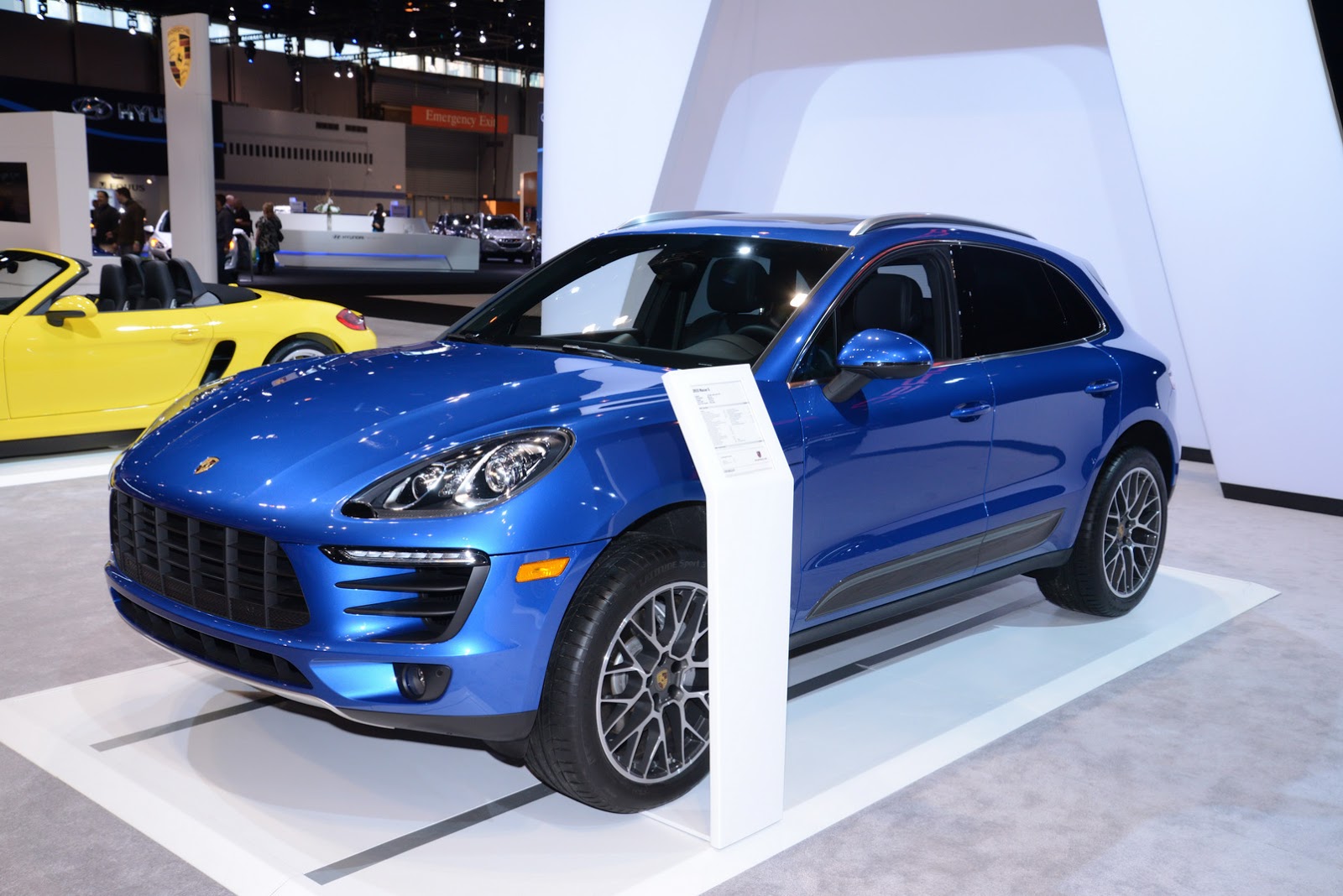Luxury Carmakers Face Headwinds In China: Case Studies Of BMW And Porsche

Table of Contents
Economic Slowdown and Shifting Consumer Preferences in China
The Chinese economy, while still growing, has experienced a slowdown in recent years. This economic deceleration directly impacts luxury car sales in China. Decreased consumer spending and disposable income mean fewer individuals are willing to invest in high-end vehicles.
-
Economic Factors: Factors like reduced consumer confidence, increased inflation, and tighter government regulations on credit are all contributing to the downturn in luxury car purchases. The impact is visible across the board, affecting not only sales of new vehicles but also the pre-owned luxury car market.
-
Shifting Preferences: The Chinese consumer market is evolving rapidly. Younger generations are increasingly prioritizing experiences over material possessions, and the allure of traditional luxury brands is waning for some. Furthermore, there's a burgeoning preference for electric vehicles (EVs), fuelled by environmental concerns and technological advancements.
-
Examples: BMW and Porsche have both reported slower-than-expected sales growth in China, directly attributed to the economic slowdown and shifting consumer preferences toward domestic brands and EVs. The demand for high-performance gasoline-powered luxury vehicles has plateaued, while the uptake of their respective EV models hasn't fully compensated for this decline.
Increased Competition from Domestic Brands
The rise of domestic luxury car brands like Nio, Xpeng, and BYD presents a formidable challenge to established players. These Chinese EV makers are leveraging technological advantages, sophisticated marketing, and competitive pricing to capture significant market share.
-
Rise of Domestic Brands: Chinese brands are not merely copying foreign designs; they are innovating, offering advanced features, and tailoring their vehicles to the specific preferences of Chinese consumers. This localized approach is proving highly effective.
-
Market Share Erosion: The success of domestic brands has directly led to market share erosion for international luxury carmakers. The gap is widening, making it increasingly difficult for established brands to maintain their premium positioning.
-
Specific Examples: Sales figures consistently show the growing dominance of domestic brands in the Chinese luxury EV segment. BMW and Porsche, while making efforts in this space, are yet to fully capitalize on the electric vehicle boom in China, partially due to the rapid advancement and competitive pricing of their Chinese competitors.
The Electrification Challenge: Adapting to China's EV Push
China's government has aggressively promoted the adoption of electric vehicles through generous subsidies, stringent emission regulations, and a focus on building robust charging infrastructure. This has created both opportunities and challenges for luxury carmakers.
-
Government Policies: China's "New Energy Vehicle" (NEV) policies heavily incentivize EV adoption, making it crucial for luxury brands to offer competitive EV models.
-
BMW and Porsche's EV Strategies: Both BMW and Porsche have launched EVs in the Chinese market, but their success has been mixed. While they boast technologically advanced models, they still face strong competition from domestic brands that are quicker to adapt to the rapidly evolving EV landscape and specific consumer preferences.
-
Charging Infrastructure: While China's charging infrastructure is improving, it's still not uniformly distributed across the country. Range anxiety remains a significant barrier to EV adoption, particularly in less developed regions.
-
Battery Technology: Advancements in battery technology, particularly in terms of range, charging speed, and cost, are crucial for accelerating the adoption of EVs. The competition in this field is fierce, and luxury brands must stay ahead of the curve to remain competitive.
Supply Chain Disruptions and Geopolitical Factors
Global supply chain disruptions, exacerbated by the pandemic and geopolitical tensions, have significantly impacted the availability of luxury cars in China. These disruptions have created logistical challenges and increased production costs.
-
Global Supply Chain Issues: The reliance on global supply chains for parts and components has made luxury carmakers vulnerable to disruptions, leading to delays in production and delivery.
-
Trade Wars and Tariffs: Trade wars and tariffs have increased the cost of importing luxury vehicles, impacting their competitiveness in the Chinese market. This has given a further advantage to locally produced vehicles.
-
Logistics and Shipping: The complexities of international shipping and logistics, coupled with global uncertainty, have added further challenges to the supply chain, impacting the timely delivery of luxury vehicles to Chinese consumers.
Conclusion: Overcoming Headwinds in the Chinese Luxury Car Market
Luxury carmakers like BMW and Porsche face significant headwinds in China, including economic slowdown, shifting consumer preferences, increased competition from domestic brands, the urgent need for electrification, and global supply chain disruptions. Success in this dynamic market requires a multi-pronged strategy. Adapting to changing consumer tastes, embracing electrification aggressively, and navigating the complexities of the geopolitical landscape are crucial for long-term success. The Chinese luxury automotive market presents both challenges and opportunities. Those brands that successfully adapt to this evolving environment are likely to thrive. Learn more about how luxury carmakers are adapting to the evolving Chinese market and the strategies for success in this dynamic environment.

Featured Posts
-
 The Countrys Evolving Business Landscape A Location Based Guide
Apr 29, 2025
The Countrys Evolving Business Landscape A Location Based Guide
Apr 29, 2025 -
 Nyt Strands April 27 2025 Complete Solutions And Spangram
Apr 29, 2025
Nyt Strands April 27 2025 Complete Solutions And Spangram
Apr 29, 2025 -
 Lynas Rare Earths Seeks Us Aid For Texas Refinery Amid Rising Costs
Apr 29, 2025
Lynas Rare Earths Seeks Us Aid For Texas Refinery Amid Rising Costs
Apr 29, 2025 -
 Understanding The Treasury Market Shift Insights From April 8th
Apr 29, 2025
Understanding The Treasury Market Shift Insights From April 8th
Apr 29, 2025 -
 The Impact Of Constant Touring On Willie Nelsons Health
Apr 29, 2025
The Impact Of Constant Touring On Willie Nelsons Health
Apr 29, 2025
Latest Posts
-
 Papal Conclave Convicted Cardinals Unexpected Request
Apr 29, 2025
Papal Conclave Convicted Cardinals Unexpected Request
Apr 29, 2025 -
 Debate Surrounds Convicted Cardinals Participation In Papal Conclave
Apr 29, 2025
Debate Surrounds Convicted Cardinals Participation In Papal Conclave
Apr 29, 2025 -
 Controversial Cardinal Demands Inclusion In Conclave
Apr 29, 2025
Controversial Cardinal Demands Inclusion In Conclave
Apr 29, 2025 -
 Cardinal Maintains Entitlement To Vote In Next Papal Election
Apr 29, 2025
Cardinal Maintains Entitlement To Vote In Next Papal Election
Apr 29, 2025 -
 Papal Conclave Disqualified Cardinal Fights For Voting Rights
Apr 29, 2025
Papal Conclave Disqualified Cardinal Fights For Voting Rights
Apr 29, 2025
